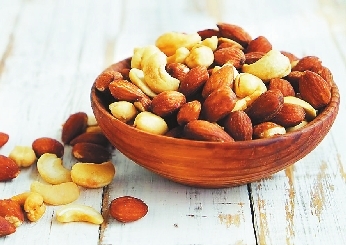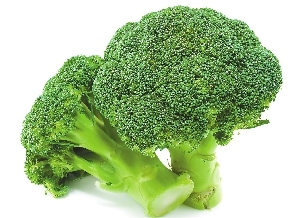



WHEN you were young, you were probably told to drink your milk. And for good reason: The calcium and vitamin D found in milk and other foods build and strengthen your bones. This is important no matter your age. Strong bones help prevent osteoporosis and keep you active longer. For better bone health, don’t stop with the milk carton. Try making the following changes to your diet. Go green Many dark green, leafy vegetables are rich in calcium — a nutrient our bodies are unable to make naturally, so it must be absorbed from our food. Good sources include kale, broccoli, spinach, bok choy, and dark lettuces like arugula. Some of these powerhouse greens are bitter. If you don’t want to eat them alone, try mixing them with savory spices and add them to salads and other side dishes like rice and pasta. Don’t overdo protein Although a balanced diet that includes protein is important for healthy bones, too much protein can actually hurt bone health. That’s because it may increase calcium excretion. If you’re on a high-protein diet, make sure you get the calcium you need. You can do this by eating dietary sources of calcium like dairy products and dark, leafy green veggies. Check in with your primary care doctor to see if you need to a calcium supplement. Go nuts Some nuts, such as almonds, contain lots of calcium. Brazil nuts, hazelnuts and walnuts are other good choices. Eat them plain as a snack or sprinkle them on salads or other dishes. Besides being a good source of calcium nuts are chock full of monounsaturated fats. These fats, unlike saturated fats, help reduce the amount of “bad” LDL cholesterol in your blood, which helps prevent heart disease. Watch the salt Excessive salt intake isn’t good for your health for many reasons. One important reason is it causes the body to excrete calcium — thwarting your efforts to get enough of the nutrient to maintain strong bones. Most of the salt we consume comes from processed foods, not the salt shaker. Cut down on salty processed foods and opt for healthy whole foods instead. If you eat processed foods, choose ones labeled “low sodium” with less than 140 mg of sodium per serving. Go fish Adding fish to your diet is an excellent choice for overall health. And it provides big benefits when it comes to your bones. Fatty fish, including salmon, tuna and sardines, is a good dietary source of vitamin D. Canned salmon and sardines are a major source of calcium and simple to eat. Low-fat ways to prepare fresh fish are baking, broiling and grilling. Basting the fish in olive oil and your choice of seasoning adds great flavor and makes the fish taste even more delicious. Avoid phytates Phytate is a substance found in some foods that can reduce the body’s ability to absorb calcium. Beans and wheat bran have high levels of phytate. But there are ways around the problem. For example, soak beans before cooking them to reduce the amount of phytates. And eat wheat bran in other foods like bread, rather than alone. Don’t overlook dairy Although there are plenty of options when it comes to calcium-rich foods and drinks, not much beats the benefits of dairy. Milk, yogurt and cheese are standouts when it comes to calcium. Many of these dairy foods are fortified with vitamin D, which your body needs to absorb calcium. Think outside the box when it comes to dairy: nonfat frozen yogurt counts, too. (SD-Agencies) | 
